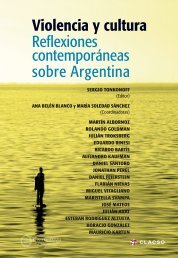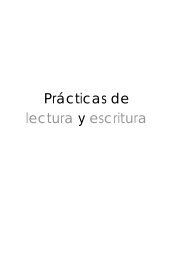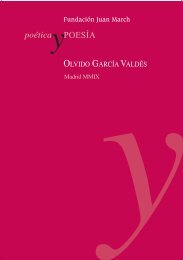blueprints
blueprints
blueprints
You also want an ePaper? Increase the reach of your titles
YUMPU automatically turns print PDFs into web optimized ePapers that Google loves.
We Were Here, and We Are Here | 73<br />
her journals: the meticulous typing and retyping on the Underwood; the<br />
carbon paper fingerprint smudges; the SASEs and trips to the post office; the<br />
occasional, encouraging scribbled replies from editors. Making the poems,<br />
sending them out, getting rejected, paying no mind, sending them out again.<br />
All this I did with no one to talk to, no peers, black or white, really. I wasn’t<br />
friendless in my poetry workshop. But I was comrade-less, kindred spiritless.<br />
I don’t think that had to do with being the only black person in the<br />
workshop, actually. Rather, I think it is rare good fortune to find close poet<br />
friends. And I would not trade my solitary year of studying poetry because it<br />
cultivated artistic practice that can survive any snowstorm.<br />
Still, there is something lost when one experiences one’s becoming-apoet<br />
not quite as an autodidact but certainly without the succor of community,<br />
the networks of community, the sense of belonging to a peer community.<br />
There have certainly been black writers’ collectives over the years,<br />
from the salon held in Georgia Douglas Johnson’s house in Washington,<br />
DC, in the 1920s to the ateliers of the Harlem Renaissance to the Umbra<br />
group of New York City in the early 1960s, chronicled so beautifully by<br />
Lorenzo Thomas, to OBASI in Chicago beginning later in the ’60s to the<br />
funky young geniuses of the Dark Room Collective in the late ’80s and<br />
early ’90s in Cambridge, Massachusetts, to the Harlem Writers Guild and<br />
the Wintergreen Women of Virginia, which continue to this day. This was<br />
what Cave Canem became for me—and more. Over the time since its<br />
founding, Cave Canem has sustained itself and quietly grown stronger and<br />
more perennial. Its distinction is in its edification; is has become an institution<br />
devoted to the nurturance of black poets.<br />
Over fifteen years ago, Toi Derricotte and Cornelius Eady had had one<br />
too many conversations with other African American poets who were<br />
weary from being “the only one” in poetry workshops. Inevitably, the black<br />
poets kept finding, when their poems were up for discussion, that conversation<br />
too often turned to racial misunderstandings or got bogged down in<br />
the call to explain cultural references unknown to their white fellow poets.<br />
Sometimes those exchanges were explosive. Lost were the poems themselves.<br />
What was in short supply was that which poets seek in workshop:<br />
feedback to make the poems stronger. So their premise was simple and elegant:<br />
it was time to create a community devoted to black poets.<br />
Derricotte and Eady decided to hold a weeklong summer workshop<br />
retreat, with African American faculty and African American poets. They<br />
made this decision while traveling in Italy, with a serendipitous visit to







